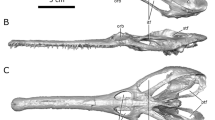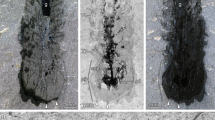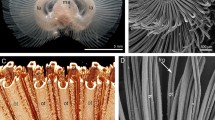Abstract
LITTLE information is available in the literature on the innervation of sensory areas in the inferior, or saccular, portion of the inner ear of the lizard. In order adequately to show nervous structure, histological techniques have been used in the past that preclude dealing with the intact animal; usually the brain must be removed, thereby disrupting anatomical relationships. A notable exception is the work of Beccari1 on embryonic material of Lacerta ; his primary interest, however, was in finding homologies in the central nervous system between reptiles and mammals, and he gives little consideration to the central terminations of fibres from specific sensory areas. Weston2,3 has speculated on central terminations of sensory fibres in Sphenodon and has discussed structure of vestibular and auditory areas in brains of a number of reptiles.
This is a preview of subscription content, access via your institution
Access options
Subscribe to this journal
Receive 51 print issues and online access
$199.00 per year
only $3.90 per issue
Buy this article
- Purchase on Springer Link
- Instant access to full article PDF
Prices may be subject to local taxes which are calculated during checkout
Similar content being viewed by others
References
Beccari, N., Arch. Ital. Anat. Embr., 10, 646 (1911).
Weston, J. K., J. Comp. Neur., 70, 355 (1939).
Weston, J. K., Acta Oto-laryngol., 27, 457 (1939).
Author information
Authors and Affiliations
Rights and permissions
About this article
Cite this article
HAMILTON, D. Posterior Division of the Eighth Cranial Nerve in Lacerta vivipara. Nature 200, 705–706 (1963). https://doi.org/10.1038/200705a0
Issue Date:
DOI: https://doi.org/10.1038/200705a0
Comments
By submitting a comment you agree to abide by our Terms and Community Guidelines. If you find something abusive or that does not comply with our terms or guidelines please flag it as inappropriate.



